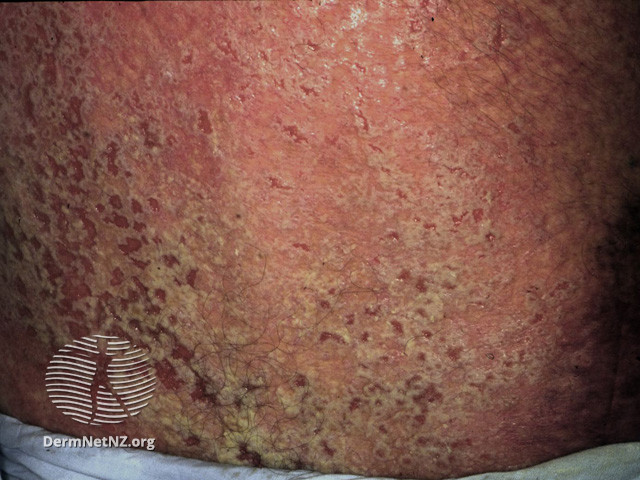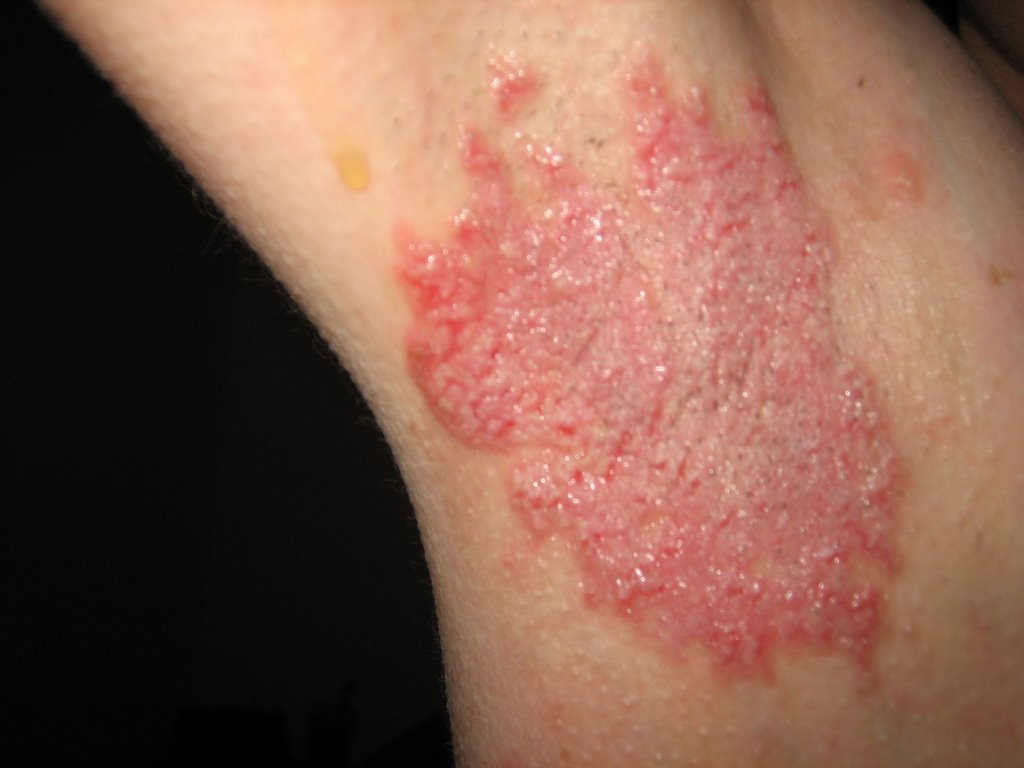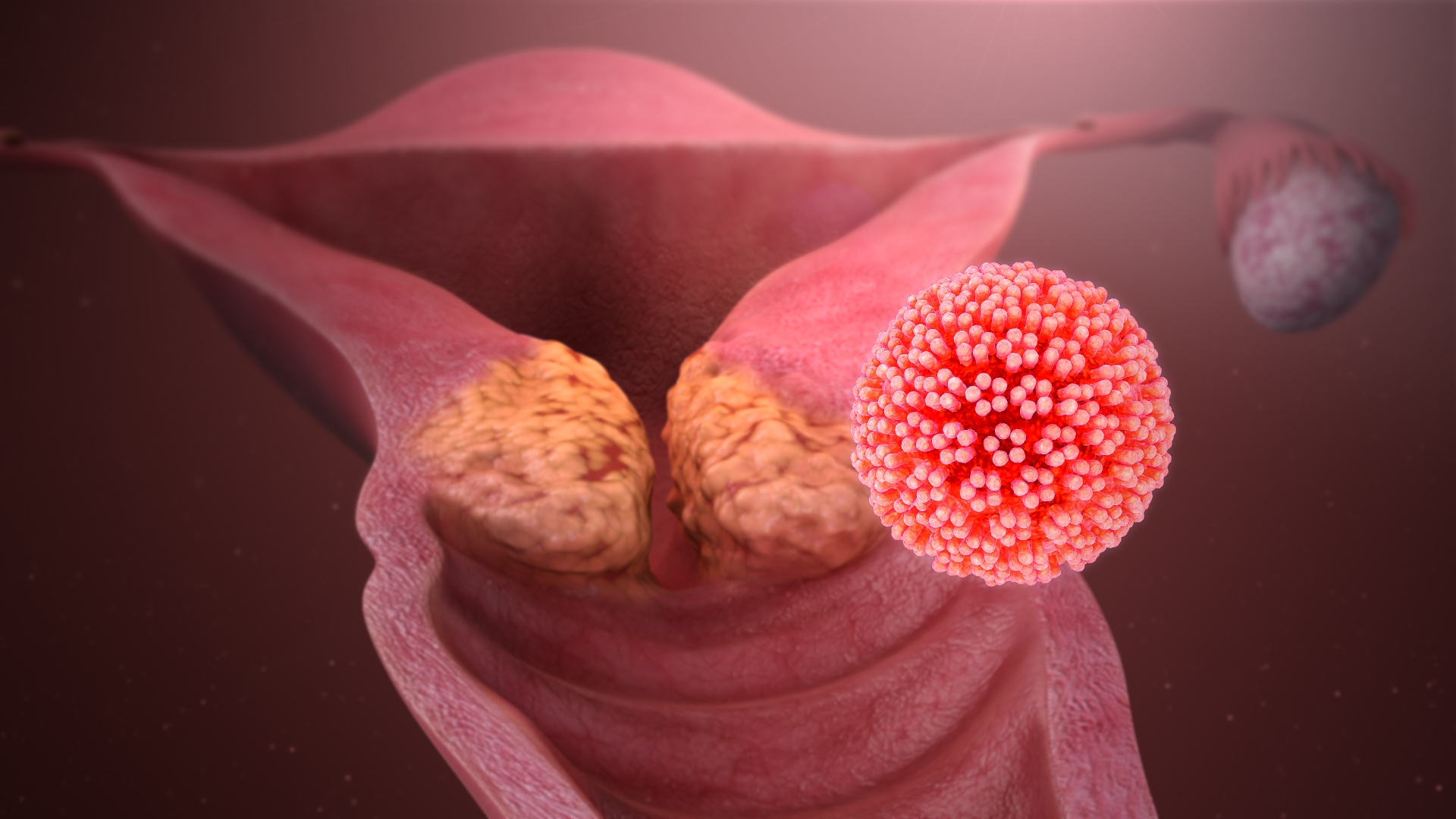|
Tzanck Cells
In dermatopathology, the Tzanck test, also Tzanck smear, is scraping of an ulcer base to look for Tzanck cells. It is sometimes also called the chickenpox skin test and the herpes skin test. It is a simple, low-cost, and rapid office based test. Tzanck cells (acantholytic cells) are found in: *Herpes simplex * Varicella and herpes zoster *Pemphigus vulgaris *Cytomegalovirus Arnault Tzanck did the first cytological examinations in order to diagnose skin diseases. To diagnose pemphigus, he identified acantholytic cells, and to diagnose of herpetic infections he identified multinucleated giant cells and acantholytic cells. He extended his cytologic findings to certain skin tumors as well. Even though cytological examination can provide rapid and reliable diagnosis for many skin diseases, its use is limited to a few diseases. In endemic regions, Tzanck test is used to diagnose leishmaniasis and leprosy. For other regions, Tzanck test is mainly used to diagnose pemphigus and herp ... [...More Info...] [...Related Items...] OR: [Wikipedia] [Google] [Baidu] |
Dermatopathology
Dermatopathology (from Greek , ''derma'' 'skin' + , ''pathos'' 'fate, harm' + , ''-logia'' 'study of') is a joint subspecialty of dermatology and pathology or surgical pathology that focuses on the study of cutaneous diseases at a microscopic and molecular level. It also encompasses analyses of the potential causes of skin diseases at a basic level. Dermatopathologists work in close association with clinical dermatologists, with many possessing further clinical training in dermatology. The field was founded by German dermatologist and physician Gustav Simon, who published the first textbook on dermatopathology, 'Skin Diseases Illustrated by Anatomical Investigations' (''Die Hautkrankheiten durch anatomische Untersuchungen erläutert''), in 1848. Dermatologists are able to recognize most skin diseases based on their appearances, anatomic distributions, and behavior. Sometimes, however, those criteria do not allow a conclusive diagnosis to be made, and a skin biopsy is taken to be ... [...More Info...] [...Related Items...] OR: [Wikipedia] [Google] [Baidu] |
Candidiasis
Candidiasis is a fungal infection due to any species of the genus '' Candida'' (a yeast). When it affects the mouth, in some countries it is commonly called thrush. Signs and symptoms include white patches on the tongue or other areas of the mouth and throat. Other symptoms may include soreness and problems swallowing. When it affects the vagina, it may be referred to as a yeast infection or thrush. Signs and symptoms include genital itching, burning, and sometimes a white "cottage cheese-like" discharge from the vagina. Yeast infections of the penis are less common and typically present with an itchy rash. Very rarely, yeast infections may become invasive, spreading to other parts of the body. This may result in fevers, among other symptoms. Finally, candiasis of the esophagus is an important risk factor for contracting esophageal cancer in individuals with achalasia. More than 20 types of ''Candida'' may cause infection with '' Candida albicans'' being the most common. Inf ... [...More Info...] [...Related Items...] OR: [Wikipedia] [Google] [Baidu] |
Darier's Disease
Darier's disease (DD) is a rare, genetic skin disorder. It is an autosomal dominant disorder, that is, if one parent has DD, there is a 50% chance than a child will inherit DD. It was first reported by French dermatologist Ferdinand-Jean Darier in 1889. Mild forms of the disease are the most common, consisting of skin rashes that flare up under conditions such as high humidity, high stress, or tight-fitting clothes. Short stature, combined with poorly-formed fingernails that contain vertical striations, is diagnostic even for mild forms. Symptoms usually appear in late childhood or early adulthood between the ages of about 15 and 30 years and will vary over the lifespan in an intermittent pattern of relapse (flareups) and remit. More severe cases are characterized by dark crusty patches on the skin that are mildly greasy and that can emit a strong odor. These patches, also known as keratotic papules, keratosis follicularis, or dyskeratosis follicularis, most often appear on th ... [...More Info...] [...Related Items...] OR: [Wikipedia] [Google] [Baidu] |
Immunofluorescence
Immunofluorescence (IF) is a light microscopy-based technique that allows detection and localization of a wide variety of target biomolecules within a cell or tissue at a quantitative level. The technique utilizes the binding specificity of antibodies and antigens. The specific region an antibody recognizes on an antigen is called an epitope. Several antibodies can recognize the same epitope but differ in their binding affinity. The antibody with the higher affinity for a specific epitope will surpass antibodies with a lower affinity for the same epitope. By conjugating the antibody to a fluorophore, the position of the target biomolecule is visualized by exciting the fluorophore and measuring the emission of light in a specific predefined wavelength using a fluorescence microscope. It is imperative that the binding of the fluorophore to the antibody itself does not interfere with the immunological specificity of the antibody or the binding capacity of its antigen. Immunofluore ... [...More Info...] [...Related Items...] OR: [Wikipedia] [Google] [Baidu] |
Hailey–Hailey Disease
Hailey–Hailey disease (HHD), or familial benign chronic pemphigus or familial benign pemphigus, was originally described by the Hailey brothers (Hugh Edward and William Howard) in 1939. It is a genetic disorder that causes blisters to form on the skin. Signs and symptoms HHD is characterized by outbreaks of rashes and blisters on the skin. Affected areas of skin undergo repeated blistering and inflammation, and may be painful to the touch. Areas where the skin folds, as well as the armpits, groin, neck, buttocks and under the breasts are most commonly affected. In addition to blistering, other symptoms which accompany HHD include acantholysis, erythema and hyperkeratosis. It typically begins in late teenage years or in a person's 30s or 40s. Causes The cause of the disease is a haploinsufficiency of the enzyme ATP2C1; the ATP2C1 gene is located on chromosome 3, which encodes the protein Secretory Pathway Ca²⁺ ATPase, hSPCA1. A mutation on one copy of the gene causes only hal ... [...More Info...] [...Related Items...] OR: [Wikipedia] [Google] [Baidu] |
Pemphigus
Pemphigus ( or ) is a rare group of blistering autoimmune diseases that affect the skin and mucous membranes. The name is derived from the Greek root ''pemphix'', meaning "blister". In pemphigus, autoantibody, autoantibodies form against desmoglein, which forms the "glue" that attaches adjacent Epidermis (skin), epidermal cells via attachment points called desmosomes. When autoantibodies attack desmogleins, the cells become separated from each other and the epidermis becomes detached, a phenomenon called acantholysis. This causes blisters that slough off and turn into Ulcer (dermatology), sores. In some cases, these blisters can cover a large area of the skin. Originally, the cause of this disease was unknown, and "pemphigus" was used to refer to any blistering disease of the skin and mucosa. In 1964, researchers found that the blood of patients with pemphigus contained antibodies to the layers of skin that separate to form the blisters. In 1971, an article investigating th ... [...More Info...] [...Related Items...] OR: [Wikipedia] [Google] [Baidu] |
Cutaneous Amoebiasis
__NOTOC__ Cutaneous amoebiasis, refers to a form of amoebiasis that presents primarily in the skin. It can be caused by ''Acanthamoeba'' or ''Entamoeba histolytica''. When associated with ''Acanthamoeba'', it is also known as "cutaneous acanthamoebiasis". ''Balamuthia mandrillaris'' can also cause cutaneous amoebiasis, but can prove fatal if the amoeba enters the bloodstream __NOTOC__ It is characterized by ulcers. Diagnosis of amebiasis cutis calls for high degree of clinical suspicion. This needs to be backed with demonstration of trophozoites from lesions. Unless an early diagnosis can be made such patients can develop significant morbidity. See also * Skin lesion A skin condition, also known as cutaneous condition, is any medical condition that affects the integumentary system—the organ system that encloses the body and includes skin, nails, and related muscle and glands. The major function of this ... References External links Cutaneous conditions Parasi ... [...More Info...] [...Related Items...] OR: [Wikipedia] [Google] [Baidu] |
Demodex Folliculorum
''Demodex folliculorum'' is a microscopic mite that can survive only on the skin of humans. Most people host ''D.folliculorum'' on their skin particularly on the face, where sebaceous glands are most concentrated. Usually, the mites do not cause any harm, so are considered an example of commensalism rather than parasitism; but they can cause disease, known as demodicosis. Anatomy Due to being adapted to live inside hair follicles, ''D. folliculorum'' is thin and worm-like, with short legs. As an adult, ''D.folliculorum'' measures long. Adults have four pairs of legs; larvae and nymphs have only three pairs. ''D.folliculorum'' has a rudimentary gut but lacks an anus, so waste accumulates within the body until it dies. Reproduction and life cycle The entire life cycle of ''D.folliculorum'' takes 14–16 days. Adult mites copulate at the top of the hair follicle, near the skin surface. Eggs are deposited in the sebaceous gland inside the hair follicle. The heart-shaped egg is l ... [...More Info...] [...Related Items...] OR: [Wikipedia] [Google] [Baidu] |
Leishmaniasis
Leishmaniasis is a wide array of clinical manifestations caused by protozoal parasites of the Trypanosomatida genus ''Leishmania''. It is generally spread through the bite of Phlebotominae, phlebotomine Sandfly, sandflies, ''Phlebotomus'' and ''Lutzomyia'', and occurs most frequently in the tropics and sub-tropics of Africa, Asia, the Americas, and southern Europe. The disease can present in three main ways: Cutaneous leishmaniasis, cutaneous, mucocutaneous leishmaniasis, mucocutaneous, or visceral leishmaniasis, visceral. The cutaneous form presents with skin ulcers, while the mucocutaneous form presents with ulcers of the skin, mouth, and nose. The visceral form starts with skin ulcers and later presents with fever, low red blood cell count, and enlarged spleen and liver. Infections in humans are caused by more than 20 species of ''Leishmania''. Risk factors include poverty, malnutrition, deforestation, and urbanization. All three types can be diagnosed by seeing the paras ... [...More Info...] [...Related Items...] OR: [Wikipedia] [Google] [Baidu] |
Molluscum Contagiosum
Molluscum contagiosum (MC), sometimes called water warts, is a viral infection of the skin that results in small raised pink lesions with a dimple in the center. They may become itchy or sore, and occur singularly or in groups. Any area of the skin may be affected, with abdomen, legs, arms, neck, genital area, and face being the most common. Onset of the lesions is around seven weeks after infection. They usually go away within a year without scarring. The infection is caused by a poxvirus called the '' molluscum contagiosum virus'' (MCV). The virus is spread either by direct contact, including sexual activity, or via contaminated objects such as towels. The condition can also be spread to other areas of the body by the person themselves. Risk factors include a weak immune system, atopic dermatitis, and crowded living conditions. Following one infection, it is possible to get re-infected. Diagnosis is typically based on the appearance of the lesions. Prevention includes ha ... [...More Info...] [...Related Items...] OR: [Wikipedia] [Google] [Baidu] |
Human Papillomavirus Infection
Human papillomavirus infection (HPV infection) is caused by a DNA virus from the ''Papillomaviridae'' family. Many HPV infections cause no symptoms and 90% resolve spontaneously within two years. In some cases, an HPV infection persists and results in either warts or precancerous lesions. All warts are caused by HPV. These lesions, depending on the site affected, increase the risk of cancer of the cervix, vulva, vagina, penis, anus, mouth, tonsils, or throat. Nearly all cervical cancer is due to HPV, and two strains – HPV16 and HPV18 – account for 70% of all cases. HPV16 is responsible for almost 90% of HPV-positive oropharyngeal cancers. Between 60% and 90% of the other cancers listed above are also linked to HPV. HPV6 and HPV11 are common causes of genital warts and laryngeal papillomatosis. An HPV infection is caused by the ''human papillomavirus'', a DNA virus from the papillomavirus family. Over 200 types have been described. An individual can become infected w ... [...More Info...] [...Related Items...] OR: [Wikipedia] [Google] [Baidu] |
Hand, Foot, And Mouth Disease
Hand, foot, and mouth disease (HFMD) is a common infection caused by a group of enteroviruses. It typically begins with a fever and feeling generally unwell. This is followed a day or two later by flat discolored spots or bumps that may blister, on the hands, feet and mouth and occasionally buttocks and groin. Signs and symptoms normally appear 3–6 days after exposure to the virus. The rash generally resolves on its own in about a week. The viruses that cause HFMD are spread through close personal contact, through the air from coughing, and via the feces of an infected person. Contaminated objects can also spread the disease. Coxsackievirus A16 is the most common cause, and enterovirus 71 is the second-most common cause. Other strains of coxsackievirus and enterovirus can also be responsible. Some people may carry and pass on the virus despite having no symptoms of disease. Other animals are not involved. Diagnosis can often be made based on symptoms. Occasionally, a th ... [...More Info...] [...Related Items...] OR: [Wikipedia] [Google] [Baidu] |






